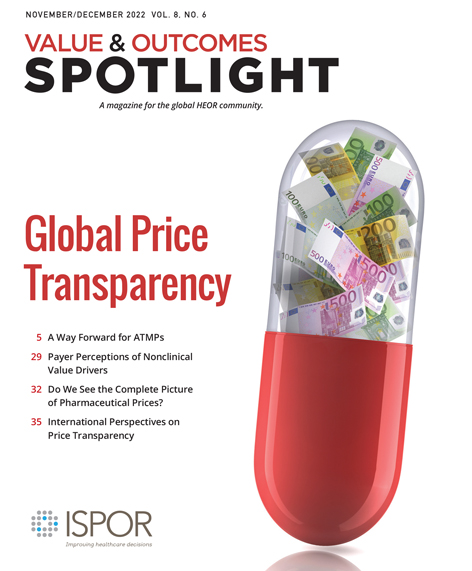Can Equitable Access Be Achieved With Global Price Transparency?
 Access to affordable medicines continues to be a challenge due to pricing and reimbursement policies. Global price transparency and its impact on equitable access are issues that have been widely discussed. Many agree that global price transparency is not just about the price of drugs but more about the added value or benefit the innovative therapy brings to patients in different settings, including in low- and middle-income countries (LMICs).
Access to affordable medicines continues to be a challenge due to pricing and reimbursement policies. Global price transparency and its impact on equitable access are issues that have been widely discussed. Many agree that global price transparency is not just about the price of drugs but more about the added value or benefit the innovative therapy brings to patients in different settings, including in low- and middle-income countries (LMICs).
High drug prices present a significant challenge for LMICs as well as developed countries. When it comes to patient access to innovative therapies, manufacturers are the first to be blamed for the high drug prices as a major barrier to patient access; however, it is not that simple. We must look deeper into the policies and processes in countries to understand health economics drivers and how pricing works in the industry. For example, in the United States, multiple innovations and therapies are available but if patients cannot afford them, then those innovative therapies will not improve patients’ lives. PhRMA reported that in 2021 there was an average price increase of only 1.0% for the branded medicines that health plans paid due to negotiations. However, patients continue to feel the burden as these health plans and pharmacy benefit managers (middlemen) have shifted more healthcare costs to patients through coinsurance and high deductibles. Unlike services for hospital stays and physician visits where health plans often share the costs with patients, this is usually not the case for medicines. Patient spending on branded medicines for commercially insured patients is often based on the undiscounted prices (list price) rather than the negotiated discounted prices (net price) health plans receive, leading to patient out-of-pocket costs for branded medicines increasing by 50% since 2014 according to PhRMA. To address the issue of patient access, we need to look at this holistically and reshape the insurance system to ensure these savings are passed on to patients.
As Dr Jens Grueger points out in this issue’s feature article, two areas should be examined when it comes to price transparency: (1) the confidential tendering and commercial contracting process, and (2) the use of reference pricing. Commercial confidential contracting has its own clear process yielding optimal prices. Disclosing these rebates could lead to price convergence toward an average price band that applies to all. High-income countries could benefit as the price would be lower than what they can afford. On the other hand, LMICs would not benefit as the average price would be higher than what they can afford, leading to longer patient access delays.
Use of international price referencing for new innovative therapies with patent protections makes sense but only when a group of countries are economically similar. The concern arises when countries that are very different economically are grouped as the price convergence would yield the lowest prices in that group of countries and, metaphorically, would be like comparing apples to oranges. The goal is to make these products available globally to address an unmet need, including LMICs where affordability issues is a concern.
Differential pricing (pricing based on affordability levels) may be a path forward and has clearly been demonstrated in HIV/AIDS. Stakeholders, including manufacturers and governments, cooperated and agreed to pricing these treatments based on what countries could afford to pay (in the case of LMICs, at a fraction of the price of high-income countries). This improved global patient access and addressed the issue of affordability.
The HIV/AIDS area clearly demonstrated that affordable patient access is possible, but it will take all stakeholders working together to improve patient access to innovative therapies. This will also require an acceptance of an agreed framework allowing for confidential rebates and eliminating external reference pricing.
As always, I welcome input from our readers. Please feel free to email me at zeba.m.khan@hotmail.com.

